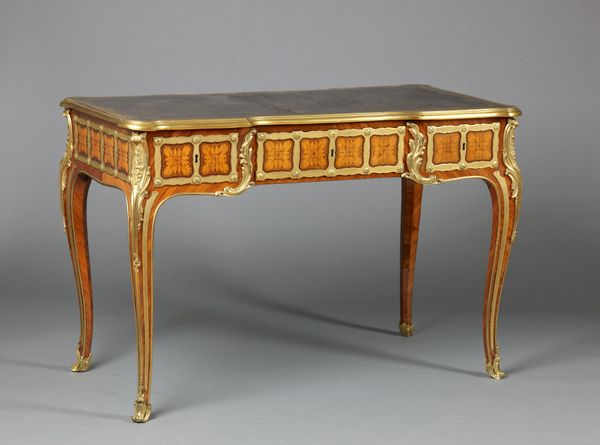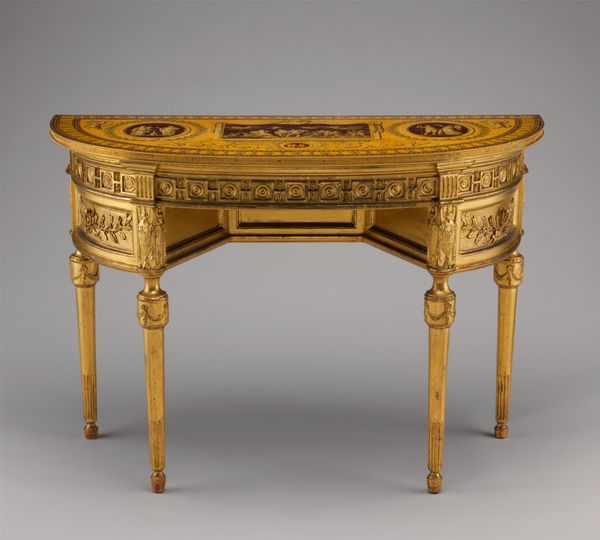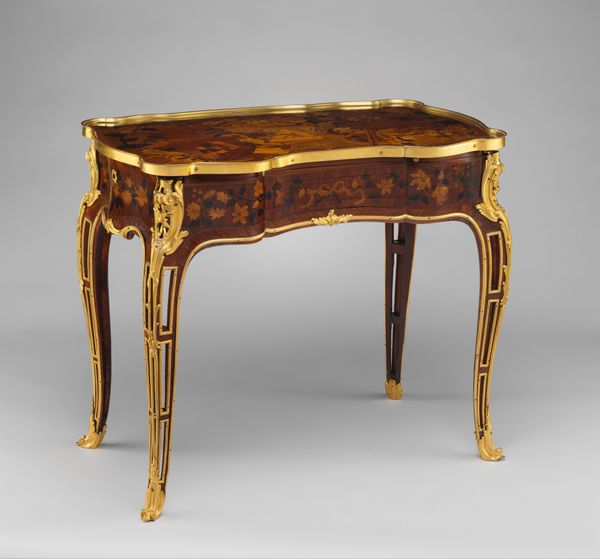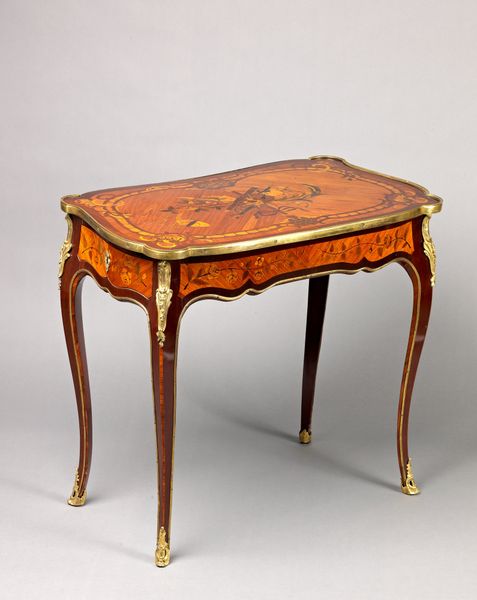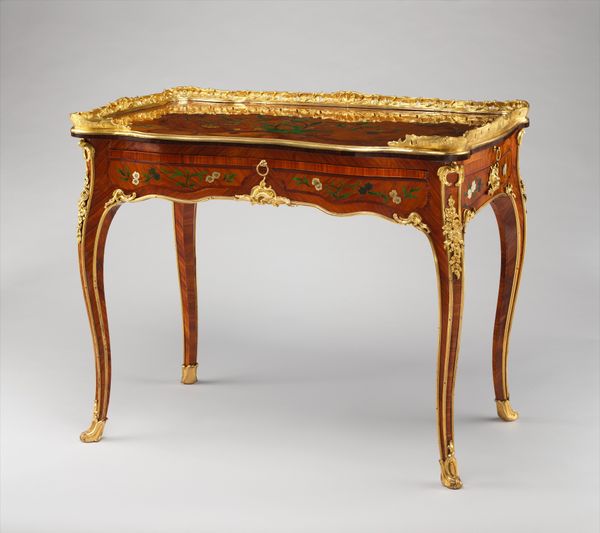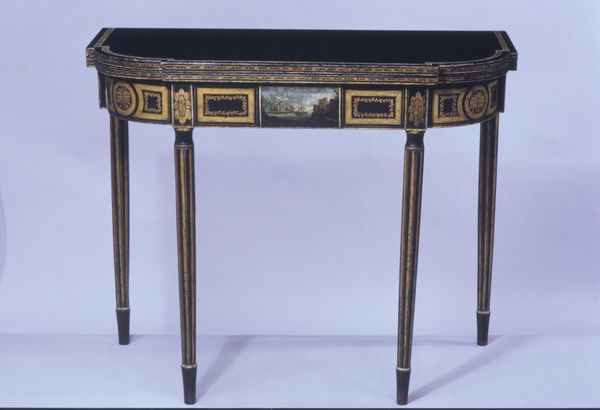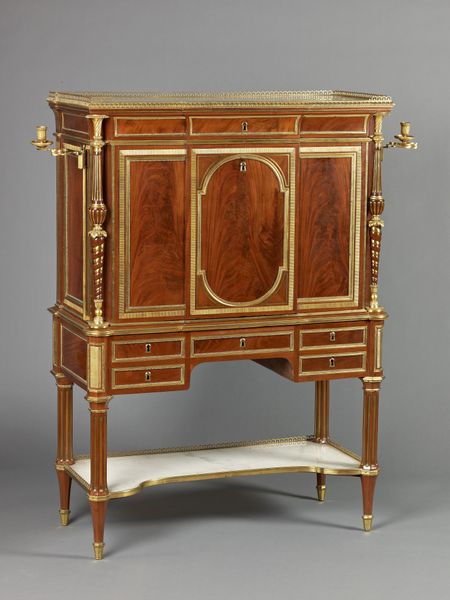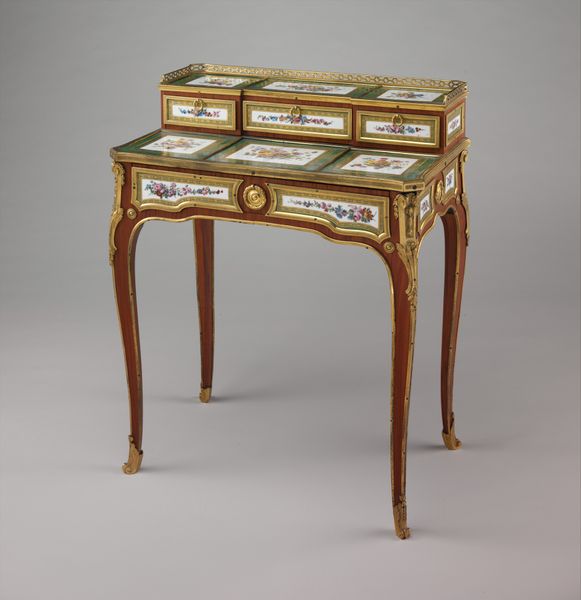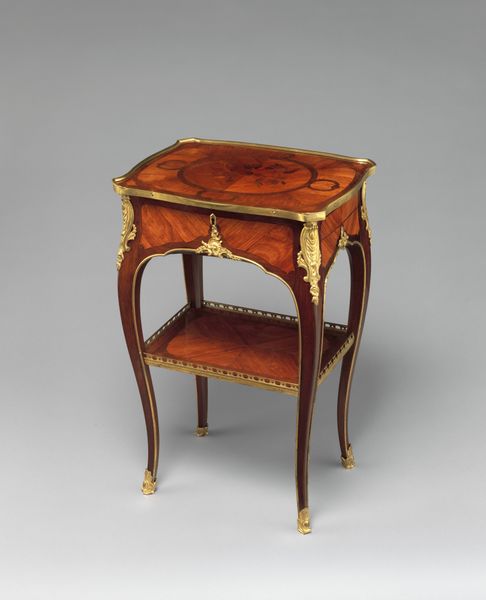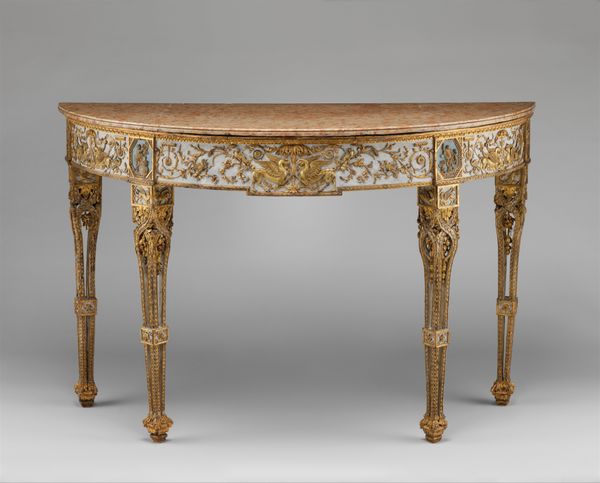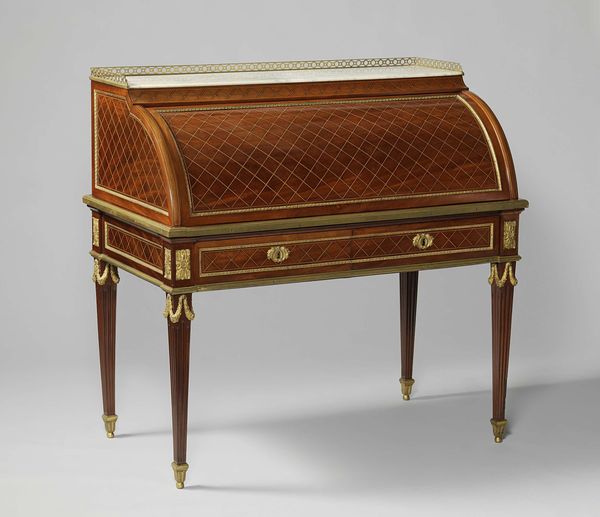
wood
#
sculpture
#
furniture
#
wood
#
decorative-art
#
rococo
Dimensions: overall: 73.8 x 79.6 x 46.1 cm (29 1/16 x 31 5/16 x 18 1/8 in.)
Copyright: National Gallery of Art: CC0 1.0
Curator: This gorgeous writing table dates to around 1770 and is attributed to Martin Carlin. It's crafted primarily from wood. Editor: Immediately I’m struck by the elegance and restraint, despite the evident opulence. It feels almost… melancholic. Is that strange? Curator: Not at all. Consider the social context: the late Rococo period. The table embodies aristocratic taste, a world teetering on the edge of revolution. It's a beautiful object, no doubt, but its creation and ownership speak to deep inequalities and power structures of that time. Who had access to this luxury and at what cost? Editor: Right, the Gilded Age anxiety before the fall. Looking closer, the details tell such a rich story of the symbolism. The delicate carvings around the drawer...leaves, floral elements... What do you make of their arrangements? Curator: Carlin worked during a shift towards Neoclassicism, though hints of the earlier style remain. The natural motifs –the stylized leaves– are less exuberant, more contained than earlier Rococo. These gilded embellishments serve to legitimize aristocratic ideology while cloaking the labour and resources required to obtain these objects. It also creates the domestic sphere as a cultivated, naturalized reflection of aristocratic life. Editor: And notice the legs! Those tapering forms terminating in the ornate feet…it's a familiar motif. The table practically seems to stand on tiptoe! And the tray inset to the table’s surface recalls hospitality. Perhaps the owner would receive correspondence or conduct correspondence. This reminds me of notions of ritual, ceremony, and the preservation of tradition. It projects power subtly, in a civilized, “genteel” manner. Curator: Exactly! The writing table, an object of both display and practical use. Its presence implies leisure, literacy, and access to knowledge, luxuries not universally afforded at the time. So this artwork prompts questions of class, privilege, and representation. It speaks volumes about the era's power dynamics. Editor: I agree. Though initially, its graceful appearance might seduce us, understanding its origins creates space for some rather incisive social criticism.
Comments
No comments
Be the first to comment and join the conversation on the ultimate creative platform.
